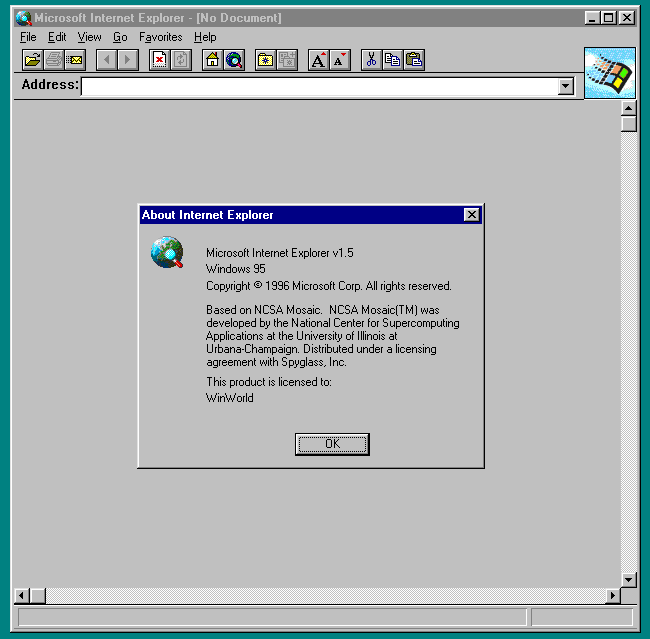Definition of Microsoft Internet Explorer in Network Encyclopedia.
What is Microsoft Internet Explorer?
Internet Explorer is Microsoft’s web browser and integrated suite of client-side Internet software, which integrates tightly into the Microsoft Windows operating system and was included with Windows until version 7 as an essential operating system component. In July 2019 a new web browser eas released: Microsoft Edge.

Microsoft Internet Explorer includes such components as:
- Internet Explorer Web browser
- Microsoft Outlook Express
- Microsoft NetMeeting
- Microsoft FrontPage Express
- Microsoft Chat
- Web Publishing Wizard
- Connection Wizard
Internet Explorer’s Web browser includes
- Support for the latest Internet protocols, including Hypertext Markup Language (HTML) 4; Microsoft Visual Basic, Scripting Edition (VBScript); Jscript; ActiveX; Java; and Dynamic HTML
- Split-screen Search, History, Channel, and Favorites Explorer bars that can be toggled on and off
- Security zones for dividing intranets and the Internet into safe and unsafe regions with their own security settings
- Authenticode 2 code-signing technology that enables users to check the digital certificate of downloaded code before installing it on their system
- Offline browsing, which enables users to access Web content in their History or Subscribed Content folders when they are not connected to the Internet
- Scheduled, unattended dial-up for obtaining Web content from subscribed sites to view offline later
- Autocompletion of Uniform Resource Locators (URLs) typed into the address bar using Microsoft IntelliSense technology
- Dynamic HTML behaviors that allow Dynamic HTML functionality to be extended through hosted components
- Development enhancements that allow users to set the properties of items based on the value of an expression
- Enhancements to tables that allow users to create fixed-layout tables and collapsible borders
- Accessibility enhancements

Internet Explorer was once the top web browser
Internet Explorer was once the most widely used web browser, attaining a peak of about 95% usage share by 2003. This came after Microsoft used bundling to win the first browser war against Netscape, which was the dominant browser in the 1990s. Its usage share has since declined with the launch of Firefox (2004) and Google Chrome (2008), and with the growing popularity of operating systems such as Android and iOS that do not support Internet Explorer. Estimates for Internet Explorer’s market share are about 2.28% across all platforms or by StatCounter’s numbers ranked 7th, while on desktop, the only platform on which it has ever had a significant share (e.g., excluding mobile and Xbox) it is ranked 4th at 5% after macOS’s Safari. It manages to reach the second rank after Chrome when its statistics are combined with its successor, Edge (others place IE 3rd with 7.44% after Firefox). Microsoft spent over US$100 million per year on Internet Explorer in the late 1990s, with over 1,000 people involved in the project by 1999.